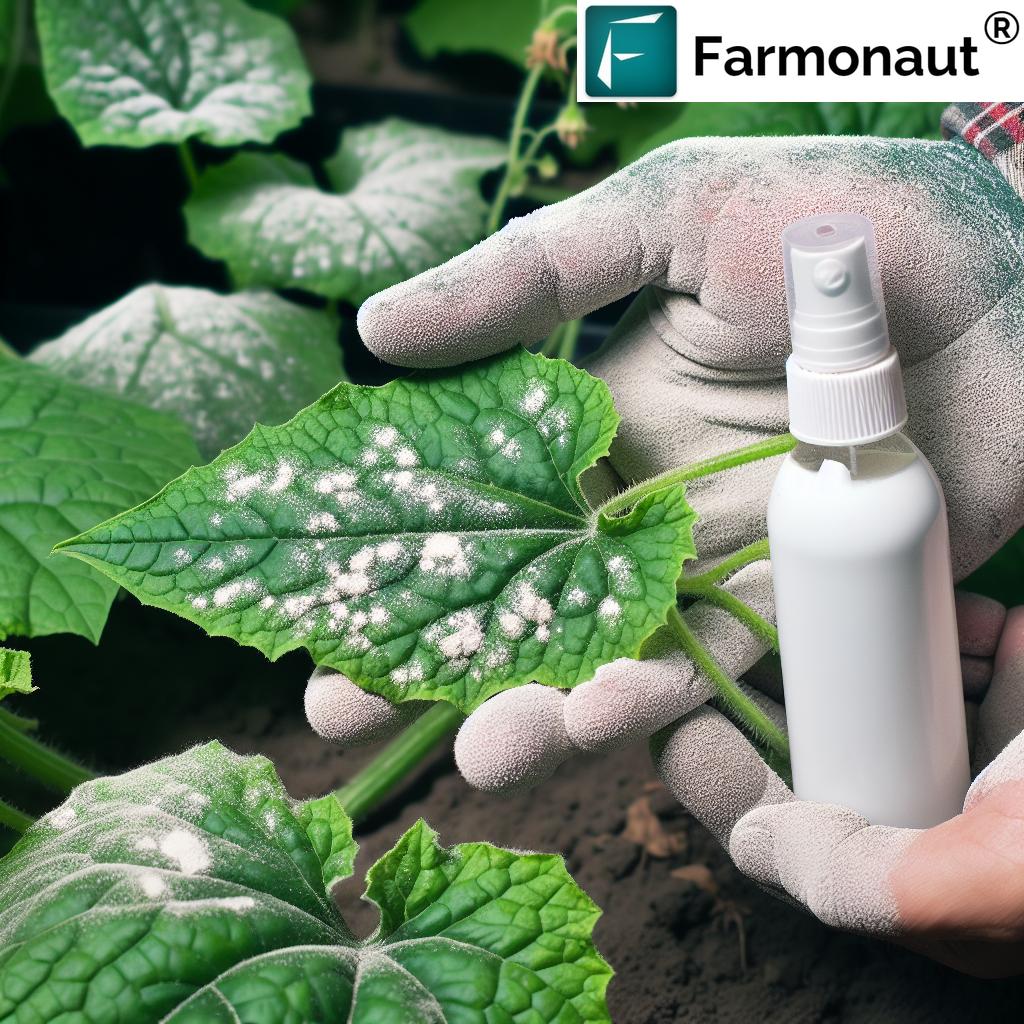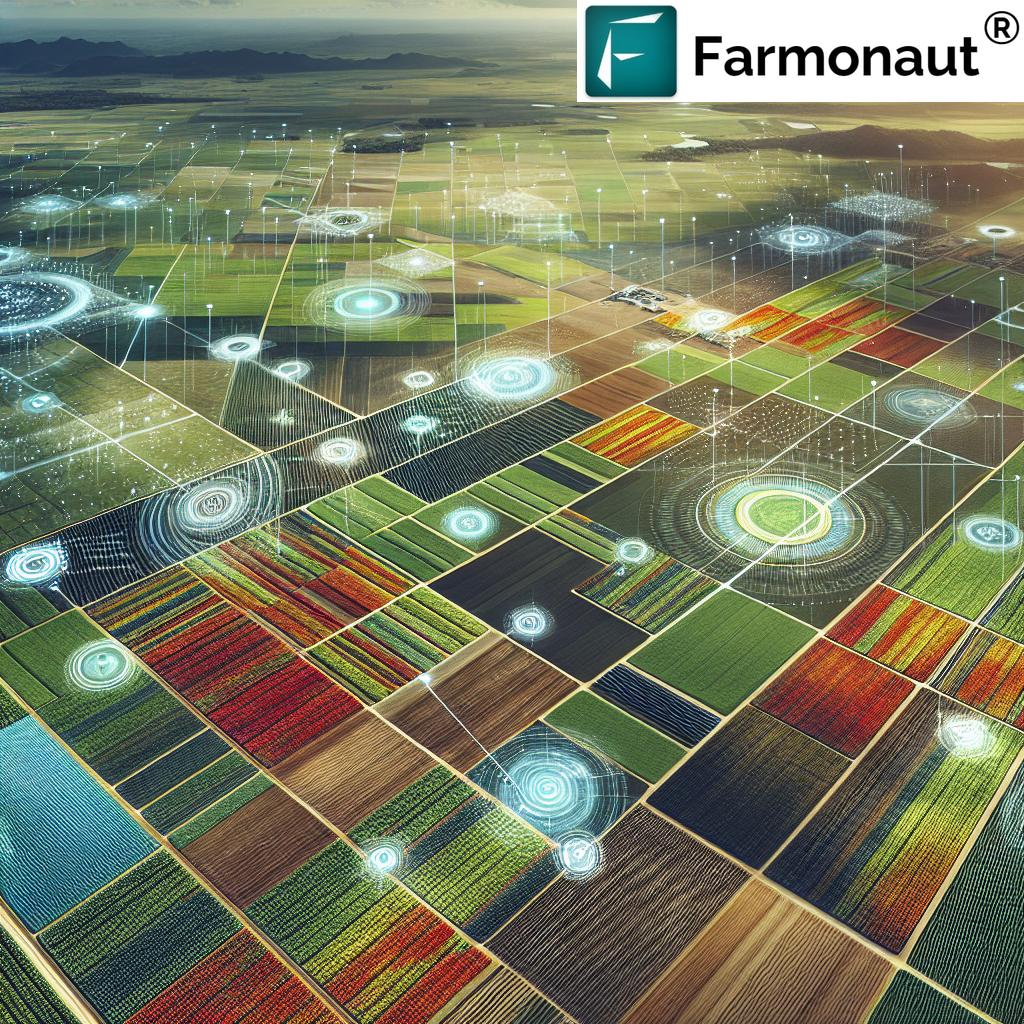Ad Irrigation, Core & Cocoa Irrigation: 7 Innovations 2025
“Smart irrigation systems increased cocoa yields by up to 22% in pilot farms using core water management technologies in 2025.”
Summary: Innovations and Strategies in Cocoa Irrigation
Facing rising demand for chocolate and a changing global climate, the world’s cocoa industry in 2025 is undergoing remarkable transformation. Cocoa irrigation, ad irrigation, and core irrigation technologies are now crucial pillars in ensuring crop health, maximizing yields, and safeguarding the livelihoods of millions of smallholder farmers throughout the tropics, with major regions like Côte d’Ivoire, Ghana, and Indonesia leading in both cultivation and innovation.
Groundbreaking irrigation advancements have not only reduced water wastage and improved soil moisture levels, but are also actively enhancing the sustainability, efficiency, and resilience of cocoa farming ecosystems in high-risk, climate-impacted areas. In this comprehensive guide, we take a deep dive into the state-of-the-art ad irrigation, core irrigation, and cocoa irrigation methods set to define the sector in 2025 and beyond.
We cover 7 pivotal innovations, compare their impact, and illustrate how smart water management—bolstered by data-driven solutions and satellite technologies—will secure cocoa’s place as the world’s most beloved raw chocolate material for generations to come.
Introduction: The Need for Cocoa Irrigation in 2025
The primary raw material for the chocolate industry, cocoa, is almost exclusively cultivated in predominantly tropical regions that are prone to varying climatic conditions. From the lush rainforests of West Africa to the volcanic soils of Indonesia, over 5 million smallholder farmers depend on cocoa for their livelihoods.
However, the realities of the 21st-century global climate—extreme weather patterns, longer dry seasons, and unpredictable rainfall—pose significant challenges to sustainable cocoa farming. Water management—specifically the use of innovative irrigation systems—is no longer an option, but an imperative for maintaining crop health, ensuring consistent yields, and supporting food security in chocolate-producing countries.
The year 2025 marks a turning point. Modern ad irrigation, core irrigation, and cocoa irrigation methods have become integral tools, combining technology and traditional knowledge to:
- Address the climate variability and water scarcity threatening millions of hectares of cocoa plantations.
- Maximize yields while reducing water use and protecting soil health.
- Make cocoa farming more resilient, profitable, and environmentally responsible.
“In 2025, advanced cocoa irrigation techniques reduced water usage by 30% while maintaining optimal soil moisture levels.”
Understanding Cocoa Irrigation Needs & Sensitivities
It’s important to recognize that cocoa plants are especially sensitive to both drought and flooding. Their optimal growth relies on consistent soil moisture levels—moist, but never waterlogged.
- Traditionally reliant on rainfall: Cocoa farmers in Côte d’Ivoire, Ghana, and Indonesia have, for generations, depended on natural rainfall to hydrate their crops.
- Changing weather patterns in 2025: Longer dry seasons, erratic rainfall distribution, and higher temperatures—typical of major cocoa-producing countries—now threaten to damage cocoa root systems and disrupt the stability of the plantation’s microclimate beneath the canopy.
- Soil variability: Lowland and upland areas, differing soil types, and elevation means water requirements must be precisely managed across different plantation zones.
Cocoa irrigation thus requires systems that deliver the right amount of water directly to the root zone, maintaining moisture levels—but avoiding standing water that leads to root diseases.
Unlike staple crops such as rice or wheat, which may withstand flooding or waterlogged soils for a period, cocoa is uniquely vulnerable and thus benefits most from precise ad irrigation, core irrigation, and cocoa irrigation practices in the 2025 landscape.
7 Innovations in Core Irrigation for Cocoa Farming (2025)
In response to new climatic conditions and rising demand for sustainable chocolate, farmers are rapidly adopting modern cocoa irrigation methodologies that are direct, targeted, and efficiency-driven. Below, we explore 7 key irrigation innovations enhancing cocoa farming across major plantations in Côte d’Ivoire, Ghana, and Indonesia.
- Drip Irrigation Systems: The most widely adopted irrigation method for cocoa, using a network of tubes and emitters that release water slowly and directly to the base of each tree. This minimizes wastage, keeps moisture within the root zone, and can boost cocoa yields by 20–24% when properly managed in tropical climates.
- Micro-Sprinkler Irrigation: An innovation tailored for young cocoa plantations or areas lacking full shade trees, this system sprays fine water droplets over the soil—imitating gentle rainfall and maintaining humidity around delicate cocoa flowers and pods.
- Rainwater Harvesting Integration: Forward-thinking farmers are investing in small reservoirs and catchment systems to store excess rainfall, enabling irrigation even during extended dry periods. This reduces reliance on groundwater resources and enhances resilience against future climate variability.
- Soil Moisture Sensor Networks: Sensor-based core irrigation technologies now monitor real-time soil moisture at varying depths. Farmers can adjust watering schedules according to the specific needs of different cocoa zones, avoiding over-irrigation or drought stress.
- Fertigation Systems: Combining nutrient delivery with irrigation, these systems ensure that essential nutrients and water reach the root zone simultaneously. The result is improved plant health and more efficient fertiliser usage—especially important in nutrient-poor tropical soils.
- Smart Automation & IoT-Enabled Controls: In 2025, cocoa plantations leverage IoT-connected pumps and valves that automate watering based on sensor feedback and weather data. This reduces labor, saves water, and ensures consistency in irrigation application.
- Remote Sensing for Irrigation Optimization: Satellite imagery and drones map the distribution of soil moisture and highlight zones at risk of water stress or overwatering. Such insights enable real-time, plantation-wide adjustments for maximal cocoa health and yield.
Taken together, these core innovations represent a revolution in cocoa irrigation—integrating modern technology, adaptive management, and region-specific strategies to boost sustainability and farm income.
Ad Irrigation: Adaptive and Advanced Cocoa Water Management
“Ad irrigation”—reflecting both adaptive and advanced strategies—marks a leap forward for cocoa plantations in 2025. No longer are irrigation schedules based on fixed calendars or estimations. Instead, adaptive irrigation systems use real-time data from the field, weather forecasts, and advanced sensors to ensure each cocoa plant receives the right amount of water at the right time.
- Soil moisture sensors feed continuous data to farm managers, who automate irrigation timing and duration, reducing water usage by up to 40% compared to traditional manual systems.
- WiFi-enabled and cellular network controllers allow remote adjustments and monitoring, making large-scale management of cocoa irrigation feasible in both West Africa, Southeast Asia, and Latin America.
- Integration with weather data—including predictions of upcoming rainfall or heatwaves—ensures irrigation is scheduled only when needed, reducing unnecessary water use and maintaining optimal soil moisture levels for high-quality cocoa pod development.
- Remote sensing technologies (via Farmonaut’s Large-Scale Farm Management Platform and others) provide geospatial maps of moisture distribution and plant health, allowing targeted interventions for dry or overwatered zones, and supporting data-driven adaptive irrigation practices.
These smart technologies save both water and labor, while consistently protecting cocoa against drought stress and promoting uniform pod ripening across plantations.
For large producers aiming to demonstrate sustainability and carbon-reduction to global buyers, Farmonaut’s Carbon Footprinting tool empowers them to track and report on environmental impacts—essential for modernized supply chains and ESG compliance.
Comparison Table of Irrigation Innovations for Cocoa Farming (2025)
| Innovation Name | Technology Type | Estimated Water Savings (%) | Estimated Yield Increase (%) | Sustainability Impact | Ease of Adoption | Projected Cost (USD/ha) |
|---|---|---|---|---|---|---|
| Drip Irrigation Systems | Drip System | 30–45% | 20–24% | High water efficiency, reduces runoff | Medium | $800–$1700 |
| Micro-Sprinkler Irrigation | Micro-Sprinkler | 25–35% | 14–18% | Supports young cocoas, improves humidity | Medium | $600–$1400 |
| Rainwater Harvesting Integration | Storage/Reservoir Based | 20–28% | 10–12% | Reduces groundwater use, buffers drought | High | $350–$800 |
| Soil Moisture Sensor Networks | Sensor-Based | 35–42% | 18–22% | Minimizes wastage, increases precision | Low–Medium | $400–$950 |
| Fertigation Systems | Combined Nutrient/Irrigation | 20–34% | 12–16% | Improves soil fertility, plant health | Medium | $500–$1100 |
| Smart Automation & IoT Controls | IoT, Automation | 40–48% | 16–22% | Saves labor, maintains consistency | Low-Medium | $700–$2000 |
| Remote Sensing for Irrigation Optimization | Satellite/Drone-Based | 28–38% | 15–20% | Large scale, supports decision making | High | $400–$1200 |
Sustainability, Soil Health, and the Environmental Impact of Advanced Cocoa Irrigation
The necessity of sustainable irrigation practices has never been more critical. Efficient systems not only preserve finite water resources but also prevent negative side effects:
- Reducing runoff and leaching of agrochemicals—thus keeping adjacent streams and groundwater clean and safe.
- Preventing soil degradation, as water-efficient irrigation protects natural soil structure, beneficial microorganisms, and surface stability.
- Integrating shade and agroforestry: By maintaining higher humidity and stable microclimates, irrigation is even more effective when cocoa is grown beneath shade trees. Agroforestry approaches support water retention in soil, reduce temperature extremes, and bolster overall farm resilience.
Water scarcity need not mean yield loss if plantation owners are proactive in implementing irrigation and soil health strategies. Moreover, product traceability platforms like those leveraging blockchain can now certify the provenance and sustainability of cocoa, adding value for responsible global chocolate buyers.
Community Water Management and Cooperative Approaches
In many cocoa-growing regions, collective management is emerging as a best practice:
- Water-user associations help smallholders share the cost of new irrigation systems and promote equitable water distribution during critical dry periods.
- Community-run rainwater harvesting and storage infrastructure buffers against crisis and sharpens group resilience against adverse climate impacts.
- Education in the maintenance and monitoring of irrigation infrastructure promotes long-term sustainability, lowers overall costs, and empowers every farmer to participate in advancing sustainable cocoa production.
For governments and larger businesses looking to monitor environmental impacts and sustainability metrics for their cocoa operations, Farmonaut’s Carbon Footprinting tool offers advanced satellite-driven insights, aligning cocoa farming with global ESG and sustainability targets.
Challenges, Barriers, and The Way Forward in Cocoa Irrigation
Despite the clear advantages of modern cocoa irrigation, the journey toward full adoption is not without obstacles. Farmers, plantations, and cooperatives across Côte d’Ivoire, Ghana, Indonesia, and other cocoa zones must contend with:
- Initial investment costs: Although long-term benefits are substantial, smaller farms may struggle to afford drip or IoT systems. Access to microfinance and insurance can help scale access (see Farmonaut Crop Loan and Insurance solutions for satellite-based loan eligibility and risk reduction).
- Training and capacity-building: New technologies require a foundational understanding to operate, maintain, and troubleshoot—capacity-building programs led by producer groups are essential.
- Maintenance and infrastructure: In regions lacking stable energy or road systems, maintaining irrigation pumps and network infrastructure can be a challenge during the wet season or in remote locations.
- Climatic, varietal, and soil-specific adaptation: Not all cocoa varieties or soil types respond equally; tailored approaches drawing on both traditional and scientific agronomic knowledge provide the best results.
- Integration with pest and disease management: Efficient irrigation reduces plant stress, but must be paired with integrated pest/disease control to fully protect yields and minimize chemical use.
Looking toward 2025 and beyond, sustained research into drought-resistant cocoa varieties, open-access farmer training, and innovation in scalable irrigation solutions will accelerate a new era of sustainable and profitable cocoa farming worldwide.
How We at Farmonaut Empower Smart Cocoa Irrigation in 2025
As a pioneering satellite technology company, we at Farmonaut are dedicated to making smart agriculture accessible, affordable, and actionable for both smallholder farmers and large enterprises globally. Our advanced satellite imagery, AI advisory, and blockchain-based solutions are transforming water management and cocoa irrigation as we move into 2025:
- Real-time crop and soil monitoring: Using multispectral satellites, we monitor the health of cocoa plantations, soil moisture levels, and potential stress zones, empowering timely and targeted irrigation practices.
- Jeevn AI Advisory System: Our AI tool analyzes remote-sensed data and weather forecasts to provide tailored strategies for cocoa irrigation, reducing waste, maximizing yields, and improving farm resilience.
- Blockchain-based traceability: For chocolate producers and supply chains, our system tracks the journey of cocoa from farm to factory—documenting sustainable water and fertilizer practices for greater transparency and consumer trust.
- Fleet and resource management: Cocoa businesses optimize logistics and reduce operational costs by tracking vehicles, equipment, and resource distribution with our satellite-driven platform. Explore our Fleet Management system for more information.
- APIs for Developers & AgriTech: For those integrating satellite and weather data into proprietary systems, our restful Farmonaut Satellite & Weather API (and API documentation) enable seamless and scalable deployment of large-scale, technology-driven irrigation management.
Cocoa growers, agronomists, and agri-businesses can access these tools and insights via our Android, iOS, and web dashboard apps for instant and long-term benefits.
FAQ: Cocoa Irrigation, Water Management, & Technology in 2025
What is ad irrigation, and how is it different from traditional cocoa irrigation?
Ad irrigation (adaptive or advanced irrigation) leverages real-time data, sensors, weather integration, and remote controls to deliver water only when and where it is needed most.
In contrast, traditional cocoa irrigation often follows fixed schedules or relies entirely on rainfall, which can result in both under- and over-watering. Ad irrigation maximizes water efficiency and plant health.
Which cocoa-growing regions benefit most from core irrigation innovations?
Regions with increasing weather variability, such as Côte d’Ivoire, Ghana, and Indonesia, as well as emerging producers in South America and Asia, realize the greatest benefits.
These areas have the highest vulnerability to prolonged dry seasons and inconsistent rainfall patterns, making core irrigation solutions pivotal for sustainable cocoa yields.
How do soil moisture sensors support sustainable cocoa farming?
Sensor networks continuously monitor moisture at different depths in the soil. This data allows farmers to assess when and how much water is necessary—significantly reducing water wastage and protecting cocoa roots from both drought and waterlogging.
Such real-time insight is essential for adapting to unpredictable weather in 2025.
Can smallholder farmers afford modern irrigation systems?
Adoption costs are a hurdle. However, shared cooperative models, access to micro-loans and insurance, and open-source technology platforms are making smart irrigation more accessible.
Investment in crop loan & insurance tools helps smallholders finance their transition to core irrigation.
How does irrigation affect the quality of cocoa beans and chocolate?
Properly managed irrigation ensures even pod development, consistent bean size, and optimal sugar and fat content.
Poor water practices, on the other hand, can lead to small beans, off-flavors, or increased disease pressure—directly impacting global chocolate quality.
Where can plantation owners and agronomists learn more or access tools for advanced cocoa irrigation?
We at Farmonaut provide a comprehensive suite of agriculture monitoring services accessible via Web, Android, and iOS apps.
Our platform delivers real-time insights and management tools for cocoa irrigation, soil health, environmental impact, and much more.
Conclusion: The Future of Cocoa Irrigation, Technology & Resilient Chocolate Futures
As the world’s appetite for chocolate continues to rise, the importance of ad irrigation, core irrigation, and cocoa irrigation for sustainable and profitable cocoa farming in 2025 cannot be overstated.
By integrating cutting-edge technologies, smart water management, and traditional wisdom, today’s farmers, agribusinesses, and cocoa-producing countries are building greater resilience—guarding their precious crops against climatic uncertainty, maximizing yields, and protecting millions of livelihoods.
The next decade will be shaped by open access to satellite data, AI-driven advisory, smart irrigation systems, and transparent supply chain management. The imperatives are clear: improve efficiency, reduce environmental impact, and ensure the vibrancy of global chocolate supply chains for generations to come.
With continuous research, education, and investment in sustainable irrigation innovations, farming communities from Côte d’Ivoire to Indonesia will maintain their role as stewards of this vital, delicious, and culturally significant crop.
Discover more about our complete suite for crop, plantation, and forest management on the Farmonaut Crop & Plantation Advisory page.
For scalable, sustainable, and resilient cocoa irrigation—2025 is just the beginning.











